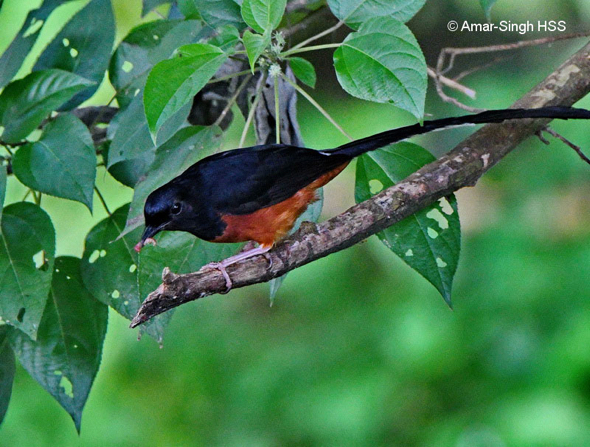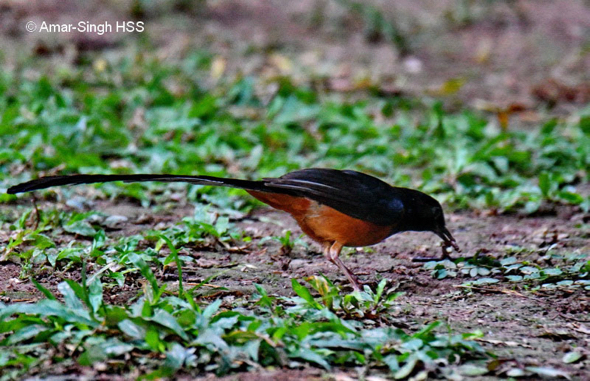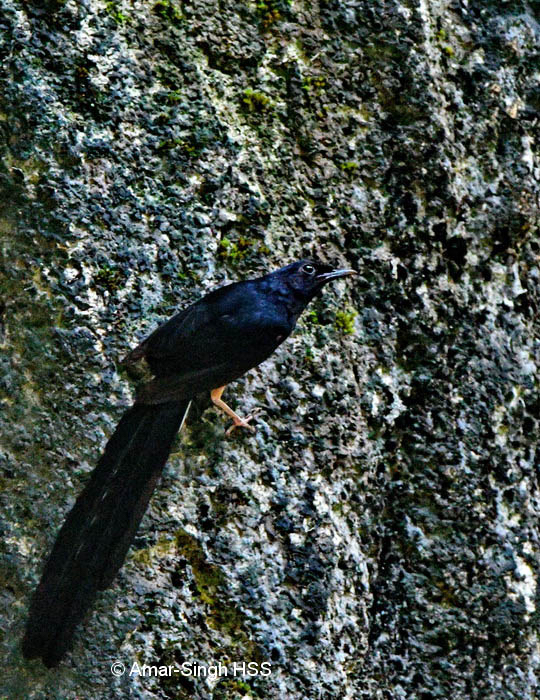
“Went back to observe a pair of White-rumped Shamas (Copsychus malabaricus mallopercnus); again only possible early in the morning in a fairly dark environment.

“They were both perched on branches and would drop to the ground to get prey.
“Although I did see insects taken, the majority of feeds were caterpillars and earthworms taken prominently from the ground.

“Branch swiping after feeds was common.

“The male can look very dark from above.”
Dato’ Dr Amar-Singh HSS
Ipoh, Perak, Malaysia
26th July 2018
Location: Ipoh, Perak, Malaysia
Habitat: Outskirts of the city with secondary growth








